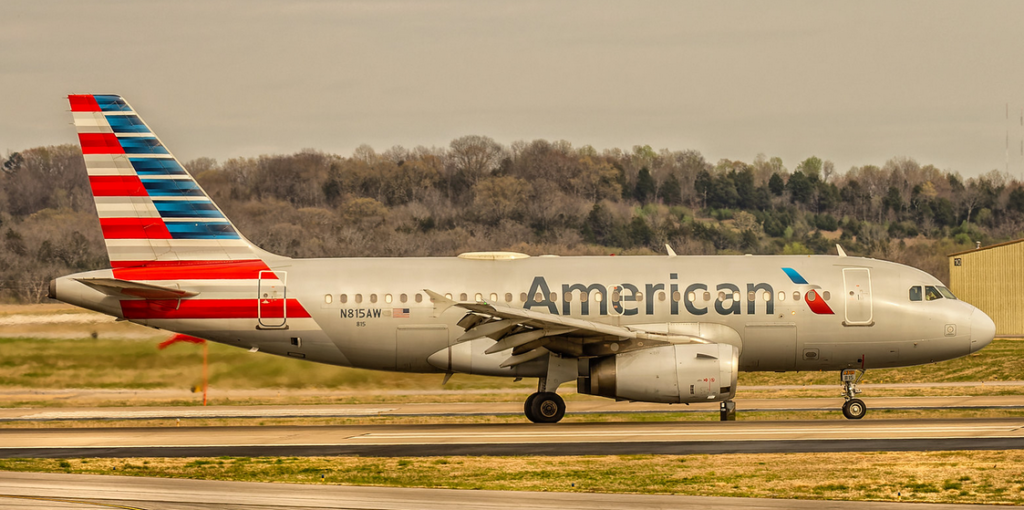Pop quiz: What company owns the plane in the image below?

The answer might seem obvious, considering the American Airlines logo staring you in the face.
But as it turns out, things aren’t so simple.
The odds that American Airlines actually owns the plane are only a little better than a coin flip.
As of the company’s latest annual report, American Airlines has a total of 965 planes in its mainline fleet. Of these, just 495 are owned — with the remaining 470 leased from another company.
That near 50-50 lease ratio is in line with the industry average. 53% of all commercial aircrafts in operation today are leased.

Considering the scale of the airline market, aircraft leasing is clearly a massive industry. But with most people only paying attention to the airlines, or the manufacturing duopoly of Boeing and Airbus, leasing tends to “fly under the radar” (ha sorry).
Today, we’ll explore:
- How aircraft leasing actually works in practice
- The economic incentives causing airlines to lease a greater portion of their fleet
- The two ways to invest in aircraft leasing
- Investment opportunities available right now
By the way, American Airlines tail number N815AW (the plane in the image) is in fact leased from owner AerCap — a company we’ll have a lot more to say on later.
Let’s go 👇
Note: The first half of this issue is free. But you’ll need the All-Access Pass to see all of it.
Table of Contents
How does aircraft leasing work?
In theory, aircraft leasing is a simple 4-step process:
- An aircraft lessor goes to a manufacturer (basically either Boeing or Airbus) and orders a plane.
- The manufacturer delivers the aircraft, and the lessor pays the the manufacturer (typically financed by a bank loan or investor loan).
- The lessor leases their new plane to an airline (like American Airlines) who operates it for a fixed number of years — effectively renting out the aircraft in exchange for regular payments.
- When the lease is finished, the airline returns the plane to the lessor, who rents it out again if it’s still in operable condition. If not, it gets scrapped.

Easy, right?
Well, as you may guess, aircraft leasing gets a lot more complicated in practice. And that’s where the investment opportunities come in.
The sale & leaseback model
While the basic model is a useful first pass, there are big facts about the market it can’t explain.
For example, despite owning 53% of all airplanes, lessors account for just 23% of new airplane manufacturing orders.
Where are lessors getting their planes from?
Well, lessors can order planes from manufacturers. But that’s not always the case.
Instead, the airline itself often buys the plane, financing it through cash or capital markets, and then sells the plane to the lessor, who turns around and leases it right back to the airline!
This bizarre technique is known as the sale & leaseback model, and it’s quite common!

In 2022, the sale & leaseback technique was responsible for 18% of all Boeing deliveries — compared with 13% by direct lessor purchases and 69% by direct airline purchases.
But wait, if an airline is planning to lease an aircraft anyways, why not just let the lessor buy it? Why would you buy it yourself first and jump through all these hoops?
A few reasons:
- In a sale & leaseback, airlines can dictate specifications to the manufacturer, giving them greater control over the plane they’ll be flying.
- The lessor might be able to achieve lower financing rates from the reduced risk of having a lease transaction embedded with the aircraft purchase, translating into better lease rates for the airline.
- Airlines can usually profit from buying low and selling high, as they get manufacturer discounts that lessors can’t access.
Sale & leaseback arbitrage can be a sizable business for airlines. Frontier made a cool $147 million in gains doing this in 2023 (but still posted a net loss of $11m).
Dry and wet leases
In Steps 3 and 4 above, I described how airlines “rent” planes before returning them. But this isn’t always how it works.
Traditional aircraft leases are known as dry leases. With a dry lease, an airline is responsible for providing crew, maintenance, fuel, and exerting operational control over flights.
But there are also wet leases, also known as ACMI (aircraft, crew, maintenance, and insurance) leases.
Under this lease agreement, the lessor is responsible for operational control over the flight, not the leasing airline. (Think of it like chartering an airline, or subcontracting a route.)
Wet leases are far more popular in Europe, where they’re used to meet short-term high demand during the summer (although some argue this is really about skirting EU labor laws).
US airlines have fewer wet leases thanks to union agreements that limit the number of flights that can be outsourced to non-airline pilots.
While typical dry lease agreements can be for 10+ years, wet leases are far shorter, from two years to just a few months.

Operating lease vs finance lease
Finally, there are two specific types of dry leases to be aware of: operating leases and finance leases.
Under an operating lease, an airline rents an aircraft for a set term before returning it to the lessor, who then has to deal with the decision of whether or not to re-lease it.
Under a finance lease, though, the airline keeps the aircraft at the end of the agreement (or, they have the option to purchase the aircraft for a generous price).
You might wonder how this is different from taking out a loan to purchase an aircraft? Well, tax authorities wonder the same thing, which is why for accounting purposes, finance leases are often treated just like loans.
But finance leases have some big benefits over a traditional loan. Most notably, they offer you the option to take ownership of the aircraft at the end, rather than the obligation.
Why has aircraft leasing become so popular?
Aircraft leasing has grown tremendously in recent years, climbing from just 2% of the market in 1980 to over 50% today!

And there’s one big reason leasing has caught on: it helps solve a fundamental problem of airline economics that has plagued the industry since inception:
Leasing gives airlines fixed cost flexibility.
For as long as they’ve been around, airlines have struggled with their cost economics:
- Airlines have huge fixed costs in the form of expensive planes, but
- They have low variable costs. Flying a route with 100 passengers isn’t much more expensive than flying the same route with 10 passengers.
- Meanwhile, airlines are almost perfect substitutes for consumers – there’s only so much differentiation a flight can offer, so price competition is fierce.
The incentive to sell additional tickets at almost any positive cost, paired with intense competition, makes it hard to keep marginal revenues high enough to support fixed costs over time.
Don’t just take our word for it. Warren Buffet (self-described “aeroholic”) described this same dynamic in a 2017 CNBC interview:
One way airlines address this is to ensure that their fixed costs are always working to generate revenue. This is a big reason the hub-and-spoke model is so popular: It has higher aircraft utilization than the point-to-point model.
But leasing provides another solution: scaling fixed costs up and down based on demand (which is arguably a paradox).
For airlines, leasing even a portion of their fleet allows for greater cashflow flexibility than owning every plane outright.
Short-term wet leases are the most obvious example of this, but even a portfolio of multi-year dry leases can have their maturities structured like a bond ladder to allow for annual decisions on whether to scale fleet sizes up or down.
Oh, and leased planes can be serviced much more quickly than newly purchased ones.
Between Boeing and Airbus, the global aircraft manufacturing backlog has grown to almost 13 years! So at this point, leasing is basically the only way for airlines to get new planes in their fleet on short notice.
When demand is high, airlines can scale up their leases to profit. When demand is low, they can scale down so they don’t go bankrupt like so many of their predecessors.
What are the drawbacks of leasing?
By using operational leases, airlines don’t build equity in their fleets, which can be a useful source of cash in tough times (sale & leaseback transactions were a vital lifeline for airlines during Covid).
While the value of that equity will depreciate over the usable life of planes (roughly 20 years at manufacturing), even an out-of-commission aircraft still has value.
After they’re done flying, planes are frequently sent to airplane graveyards (called “boneyards”) where they’re stripped for parts.
Engines, replete with hard-to-get parts, can go for millions of dollars. A secondhand 747 landing gear, meanwhile, can fetch up to $300K.

Under an operational lease, though, the lessor that retains the residual value of an aircraft, not the airline.
Furthermore, lease payments are usually even stricter than interest payments. Most aircraft leasing agreements contain a Hell or High-water clause, meaning airlines are responsible for payment no matter what happens.
Still, aircraft lessors also have to deal with their own share of risks.
As the travails of the Boeing 737 MAX highlights, crashes are still very much a live risk (the 2018 Lion Air flight that crashed in Indonesia was leased from a Chinese company).
Geopolitics introduces even more uncertainty.
When Russia invaded Ukraine in 2022, Western countries responded with financial sanctions – including canceling all aircraft leases in the country made by Western-headquartered companies.
The result? About 500 planes worth almost $15 billion stuck in Russia with no realistic avenue for lessors to repossess most of them (the legal drama is still playing out).
Still, for both airlines and lessors, it looks like the benefits of leasing will continue to outweigh the costs – which is good news for investors, who can benefit from the industry’s performance.
How to invest in aircraft leasing businesses
With production backlogs plaguing manufacturers, and travel figures back to pre-Covid levels, aircraft values have risen in recent years. This has translated into higher lease rates and stronger revenue for lessors.
Bottom line: now is a great time to be an aircraft lessor.
And there are some very interesting ways to do it…
The rest of this issue shows you how to invest in this space through methods that fly under the radar, including something called Aviation Aircraft Backed Securities (AABS’s).

See you next time, Brian
Disclosures from Alts
- This issue was not sponsored by anyone
- Neither the author, or the ALTS 1 Fund, nor Altea has any holdings in any companies mentioned in this issue
- This is a paid issue. To read the full thing, get the All-Access Pass












